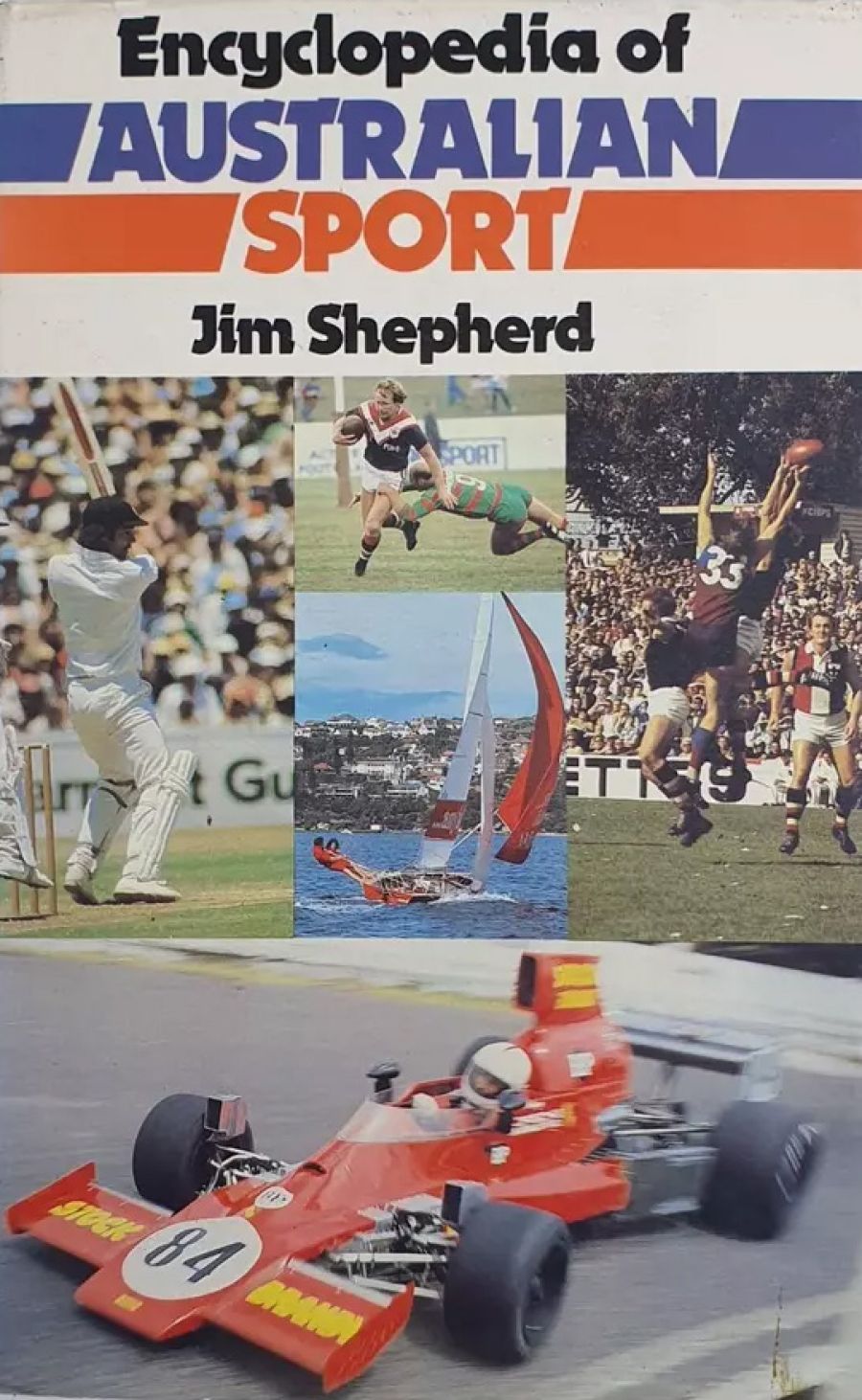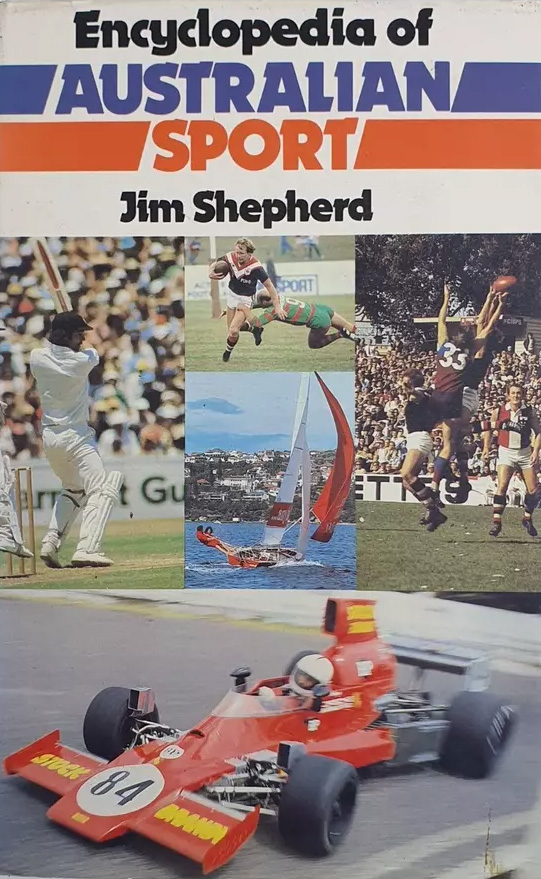
- Free Article: No
- Contents Category: Sport
- Review Article: Yes
- Article Title: Easily the Greatest
- Online Only: No
- Custom Highlight Text:
Jim Shepherd’s Encyclopedia of Australian Sport proceeds from ‘ABC Sportsman of the Year’ and ‘Abonyi, Attila (1945 – )’ on page 1 to ’Young Jack (1925 – )’ and ‘Young, Robert “Nat” (1950 )’ on page 468. In between are some 850 entries alphabetically arranged, most of them on participants (brief biography, achievements, the ‘whole picture of their star quality’) but some devoted to administrators, barrackers, etc. and to the sports themselves. Lavishly-illustrated, it’s a steal at S 10.95; brightly written, it’s precisely the sort of good read for a present to Uncle/ Cousin/Brother/Father Norm. As he argues over the underarm dismissal and the result of the 1980 Escort Cup Grand Final, that Norm will enjoy the style as well as the fact that this version of the Australian sporting experience presents most of the legends intact (e.g. see the Les Darcy and Hugh McIntosh entries).
- Book 1 Title: Encyclopedia of Australian Sport
- Book 1 Biblio: Rigby, $10.95, 469 pp
- Book 1 Cover Small (400 x 600):

- Book 1 Cover (800 x 1200):

Encyclopedias can only hope to please some of the people some of the time; the tests are accuracy, comprehensiveness and balance. On the first this work succeeds pretty well for what it is trying to do, although it is unlikely that Arthur Halloway (1899 – ), despite his small stature which earned the nickname ‘Pony’, was nine when he toured with the Kangaroos in 1908, which means that he was probably born in 1889. Similarly, Reg Gasnier wasn’t on the short list for the New South Wales Sheffield team at age sixteen (the State Colts?), water polo is hardly an aquatic version of basketball, and the last sentence of the Adam Lindsay Gordon entry will bemuse the Aust. Lit. Crits. Aficionados of other sports will no doubt find more errors; but what should also be fairly stated is that there is so much detail in this compilation that Shepherd is bound to be exposed by some of it.
On the question of comprehensiveness one could complain about the absence of Turner the Terror, the Maher Cup, the Sheffield Shield, the Stawell Gift, Jack Gregory, Herbie Collins, W.E. Midwinter, Phar Lap, Carbine and several (many ?) others; but again, authorial intentions (even if not stated) might need to be taken into account. This is a modern compendium, which explains the inclusion of the Cosiers, the Hilditches (Andrew, not Ron) and the Hursts. Given the success the last three have had in Australian cricket this season, it’s clear Shepherd isn’t punting on endurance for his reference work. Still, the absence of some of the big names and events has allowed – as its author might say – for some delightful little cameos such as Ray Neville, whose only race win as a jockey was in the 1948 Melbourne Cup and who retired soon after to become (quote) ‘one of Melbourne’s best-known taxi drivers’. As legend now has it and the Jack Thompson entry records, Neville and Rimfire only won because Thompson and Dark Marne were robbed by a faulty photo-finish camera, which for Neville at least completed the fairytale.
Finally, the balance, which is my major criticism. The Encyclopedia of Australian Sport is unbalanced not only because it emphasises modern sports-persons but also because it doesn’t need the blurb to tell us that among the Shepherd sporting passions are motor racing, boxing and cycling. The amount of space devoted to participants seems about right – Bradman and Darcy get the most – but there are simply too many bicyclists, speedway riders and insignificant boxers. Furthermore, Shepherd’s concern about the ‘whole picture of star quality’ leads to some chauvinistic conclusions (Shane Gould ‘walked away from a sport she dominated as no other swimmer in the history of the sport’, so eat your heart out Mark Spitz and East Germany; Jack Donaldson was ‘easily the greatest natural runner the world has known’). It also leads to some unfortunate relative superlatives: Bobby Lewis ‘left behind easily the most remarkable record of any jockey in the history of the Australian turf’, Tony Miller is the ‘second most- capped Australian Rugby Union player’, the McLean family is ‘probably Australia’s most unique sporting family’, Brian Dixon is ‘probably the only State Minister other than Tasmanian Darrel Baldock to play senior football’ (what about Frank Stewart?). At times, then, the Encyclopedia of Australian Sport is too much like Norman May's ‘this is the greatest run/jump/try/goal/performance I’ve ever seen!!!!!!!!!’ for comfort, and reminiscent of that famous and oft- quoted fast bowler named Rover,
who bowled sixteen balls in an over.
It had never been done.
By an Archdeacon's son
On a Tuesday, in August, in Dover.


Comments powered by CComment